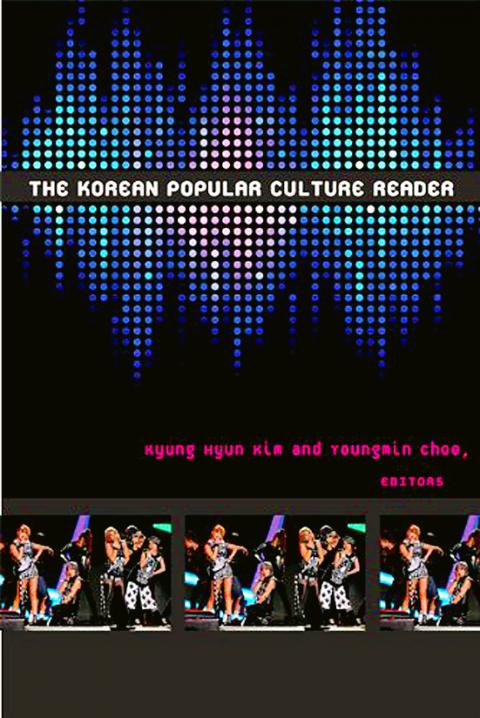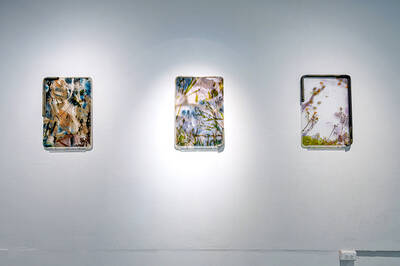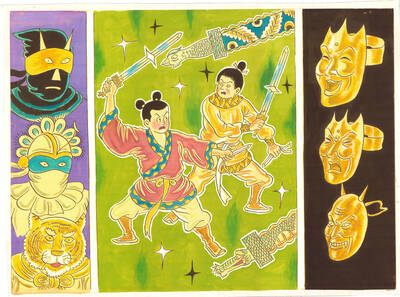I am sorry to have to say it, but The Korean Popular Culture Reader is close to the most disappointing book I have ever had to review.
Not long ago I found myself engrossed in a Korean TV mini-series called Hot Blood. It concerned the unlikely subject of an ambitious car salesman, but the production standards, acting and plot, together, I have to admit, with the extremely photogenic character of many of the performers, made me an instant addict.
It was an example of the much-vaunted genre of K-drama, and such programs have become hugely popular worldwide. I’ve lost track of some of the other titles, both contemporary and historical, I’ve found myself watching, but other sensations have included Stars Falling from the Sky and IRIS 11: New Generation of 2013.

As for the related phenomenon of K-pop, my teenage years are long gone, but I’ve nonetheless watched a number of girl groups cavorting in TV studios and performing songs that some condemn as “bubblegum pop” but which have, even so, attained astronomical ratings on social-media Web sites.
So a book that claims to be a reader relating to these phenomena was surely going to be of interest. What about the cosmetic surgery that’s said to have produced all these flawless faces? What about the near slave conditions in which these teenage groups have allegedly been trained from a very early age? And what about the exceptional screen-writers responsible for these highly watchable Korean dramas? How about the relation of these distinctive art forms to fashion, to Korean politics, to exports of other Korean products, not to mention the fan-hysteria (unmatched, some say, since the days of the Beatles), and the companies such as S M Entertainment behind these pop groups? A book that threw light on such things would surely make compelling reading.
Sadly — indeed astonishingly — almost none of these subjects, not even the pop groups themselves, let alone the TV dramas, are treated in any real depth in The Korean Popular Culture Reader.
Instead its main text opens with a chapter on early 20th century fiction, followed by one on Korean comics in the 1970s, then one on computer games, then one on the Internet as the medium for K-dramas (but little on the dramas themselves). Next come two chapters on Korean film in the 1950s, followed by one on North Korean film, and a final one in this movie section on a 2003 product designed to confront various forms of discrimination.
I couldn’t believe my eyes when, already at page 195, I found that next came a section on – sport!
Already exhausted, I turned to a Web site called “goodreads,” to find two young ladies who had been “awarded” copies of the book and had given it five stars without, in either case, having read it. One was “looking forward to reading it,” while another said she hadn’t read it yet, but loved K-pop and drama. I thought both had a major disappointment coming.
I pressed on nonetheless. After the sports section came, on page 249, a section on music. I was wrong to be relieved, however. Its first chapter was on the 1930s, the decade of our present girl groups’ great grandparents, then came a moderately interesting one on Korean rock groups in the 1960s and 1970s and their problems with the authorities, then an essay on the music of the 1990s.
Finally, on page 314, I arrived at a chapter on the phenomenon of the present-day girl groups. This was an oasis in the veritable desert surrounding it. It considered videos by Girls’ Generation, KARA, After School, Miss-A, 4Minute, 2NE1 and f(x). It questioned somewhat predictably whether they really represented an “escape from patriarchy,” but ended up by interestingly noting that Girls’ Generation were said to be made to live on only 1,200 calories a day, and that currently half of Korean high-school girls were unable to donate blood because of anemia and malnutrition caused by dieting.
There was, I admit, the routine reference to “late capitalism,” but nevertheless, with its quoted claim that 60 percent of girl group members admitted to pressure from their managers to wear revealing clothing and/or perform dance moves with which they were uncomfortable, this was an insightful and relevant chapter. Would that more of the book had been like that.
With 50 pages still to go, I still had hopes of more on what the book’s title had promised. But I discovered — to my horror — that all they contained were chapters on tourism, Korean cuisine, and an academic’s trip to North Korea.
The fundamental problem with this product is that its publishers desperately want to appeal to the huge global following that K-pop and K-drama have won (rightly or wrongly), but that most of the commissioned academics know next to nothing about it, and fall back on writing about their research topics, which are inevitably largely historical.
But that’s not all. In the book’s promotional material, Psy’s record-breaking Gangnam Style video, with some two billion hits on YouTube not counting parodies, is described as “silly.” Can something that’s received MTV Europe’s Music Award for Best Video, and has been watched by approaching a quarter of the world’s population, be labeled “silly” without a patronizing tone creeping in? I don’t think so. To patronize, and at the same time seek to please those you’re patronizing, is, it seems to me, an especially lethal combination.
The moral is, never trust literary academics, at least of the current generation, and when they’re attempting to elucidate popular culture, don’t trust them under any circumstances. They have no idea what it is, have little to say about it and, in this particular case, mostly don’t even try.

In late October of 1873 the government of Japan decided against sending a military expedition to Korea to force that nation to open trade relations. Across the government supporters of the expedition resigned immediately. The spectacle of revolt by disaffected samurai began to loom over Japanese politics. In January of 1874 disaffected samurai attacked a senior minister in Tokyo. A month later, a group of pro-Korea expedition and anti-foreign elements from Saga prefecture in Kyushu revolted, driven in part by high food prices stemming from poor harvests. Their leader, according to Edward Drea’s classic Japan’s Imperial Army, was a samurai

Located down a sideroad in old Wanhua District (萬華區), Waley Art (水谷藝術) has an established reputation for curating some of the more provocative indie art exhibitions in Taipei. And this month is no exception. Beyond the innocuous facade of a shophouse, the full three stories of the gallery space (including the basement) have been taken over by photographs, installation videos and abstract images courtesy of two creatives who hail from the opposite ends of the earth, Taiwan’s Hsu Yi-ting (許懿婷) and Germany’s Benjamin Janzen. “In 2019, I had an art residency in Europe,” Hsu says. “I met Benjamin in the lobby

April 22 to April 28 The true identity of the mastermind behind the Demon Gang (魔鬼黨) was undoubtedly on the minds of countless schoolchildren in late 1958. In the days leading up to the big reveal, more than 10,000 guesses were sent to Ta Hwa Publishing Co (大華文化社) for a chance to win prizes. The smash success of the comic series Great Battle Against the Demon Gang (大戰魔鬼黨) came as a surprise to author Yeh Hung-chia (葉宏甲), who had long given up on his dream after being jailed for 10 months in 1947 over political cartoons. Protagonist

A fossil jawbone found by a British girl and her father on a beach in Somerset, England belongs to a gigantic marine reptile dating to 202 million years ago that appears to have been among the largest animals ever on Earth. Researchers said on Wednesday the bone, called a surangular, was from a type of ocean-going reptile called an ichthyosaur. Based on its dimensions compared to the same bone in closely related ichthyosaurs, the researchers estimated that the Triassic Period creature, which they named Ichthyotitan severnensis, was between 22-26 meters long. That would make it perhaps the largest-known marine reptile and would